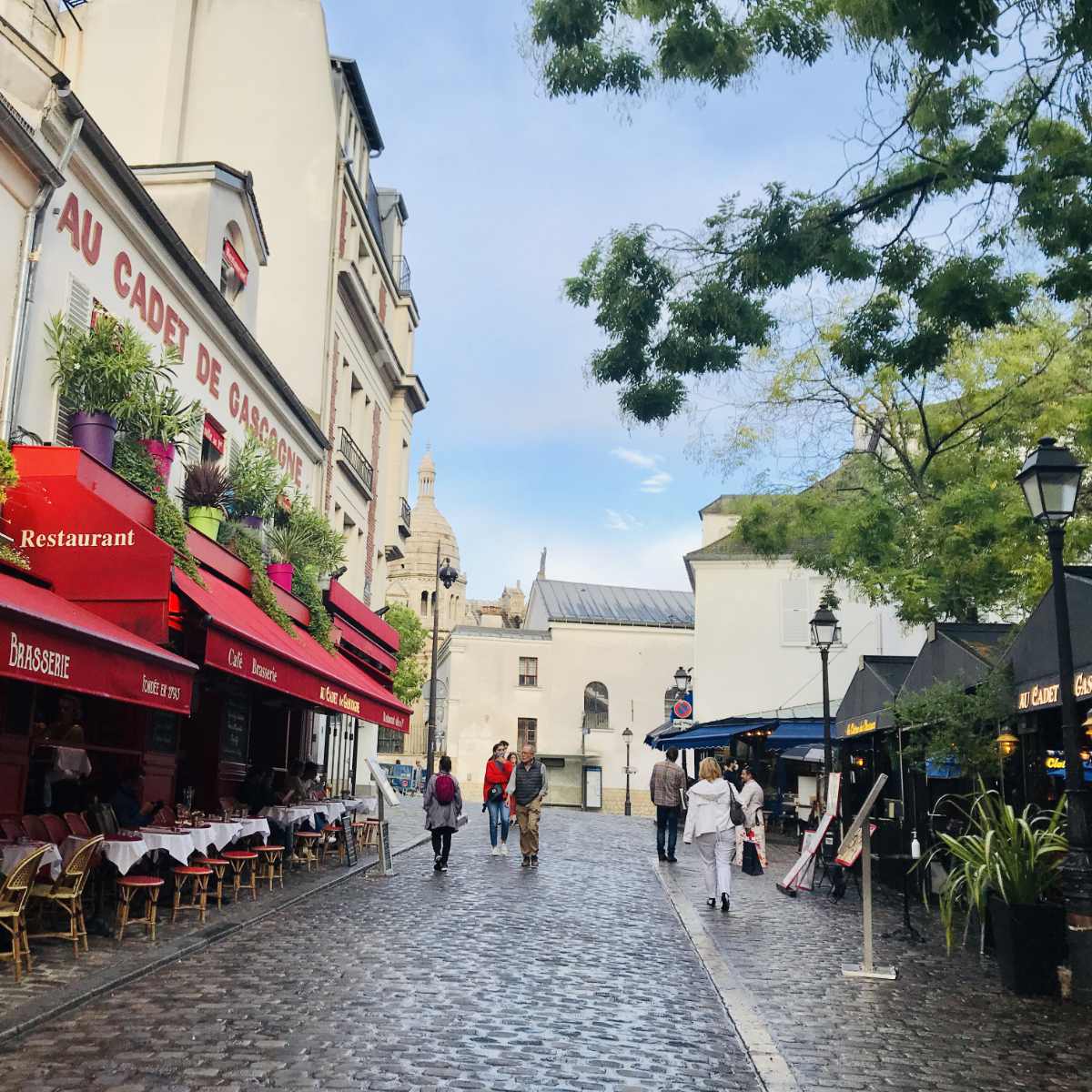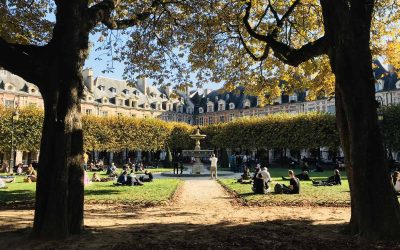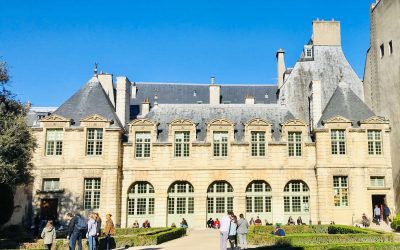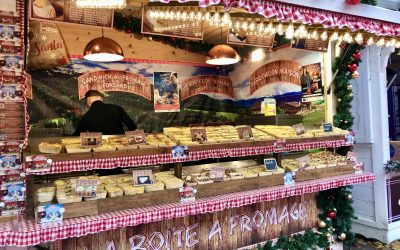Whether you’re planning a romantic getaway, a solo adventure, or a family holiday, France is a wonderful destination. The language, the culture, the food, there just something about L’Hexagone, as mainland France is called.
Paris, of course, is one of the world’s most popular travel destinations but there are many other sites throughout this beautiful country to see. The country is home to some of the most breathtaking coastal regions, medieval villages and cheerful cities.
From the châteaux of the Loire Valley to the quaint little towns, charming countryside, and mountainous regions, there is something for everyone. After living in France for over 10 years, I should know!
Whether you choose to walk along the beach in Saint Tropez, go shopping in old towns like as Annecy and Carcassonne, and take in the sights and sounds, food and drinks, and the culture of it all.
So with that, here are the top tourist attractions in France, as well as notable landmarks that are sure to leave you wanting more. Allons-y!
- 1. Eiffel Tower
- 2. Palais de Versailles
- 3. Musée du Louvre
- 4. Mont Saint Michel
- 5. Châteaux de la Loire
- 6. Cité de Carcassonne
- 7. Pont du Gard
- 8. Cliffs of Etretat
- 9. Cave paintings of Grotte Chauvet
- 10. Mont Blanc and the Alps
- 11. Rocamadour
- 12. Villages of Alsace
- 13. D-Day Beaches of Normandy
- 14. Lavender fields of Provence
- 15. Reims Cathedral
- 16. Beaches and boardwalks of Côte d'Azur (French Riviera)
- 17. Wine region of Bordeaux
- 18. Les Calanques
- 19. Jeanne d'Arc in Rouen
- 20. Gorges du Verdon
- 21. Disneyland Paris
- 22. Lourdes and the Catholic Pilgrimage
- 23. Lakeside in Annecy
- 24. The Camargue
1. Eiffel Tower
She goes by many names. La Tour Eiffel or la Dame de Fer (“The Iron Lady”) in French, and of course the Eiffel Tower to the rest of the world. Instantly recognizable, the Eiffel Tower has become the symbol of not only Paris, but also all of France.
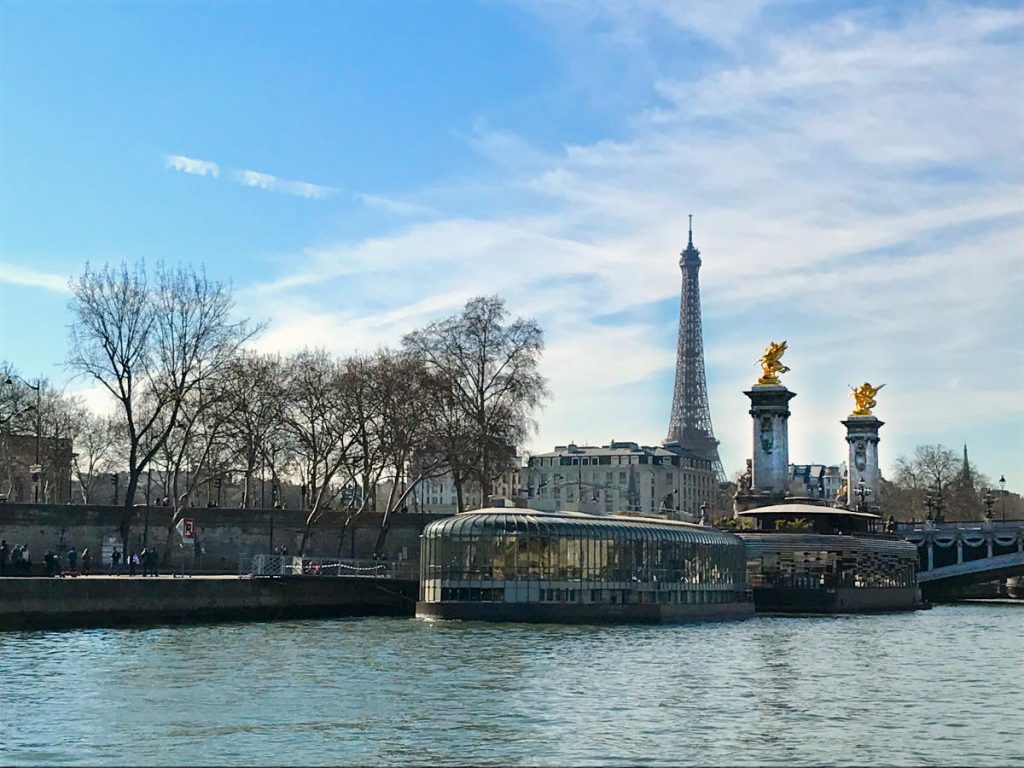
☞ READ MORE: French travel phrases you need for a trip to France
Construction of the Eiffel Tower started on 26th January 1887, and was completed in 2 years, 2 months and 5 days, a massive technological feat.
Today, tourists the world over flock to the Eiffel Tower to take in the views from all around and its observation decks. With expansive views stretching from the Arc de Triomphe to Bastille, millions of visitors put it on their bucket list every year. You can read more about the Tour Eiffel here.
If you are visiting Paris and would like to visit the Eiffel Tower, I highly recommend buying tickets in advance.
2. Palais de Versailles
It was built by the famous Sun King Louis XIV, but we think more today of the tragic destiny of Marie-Antoinette and the French Revolution.
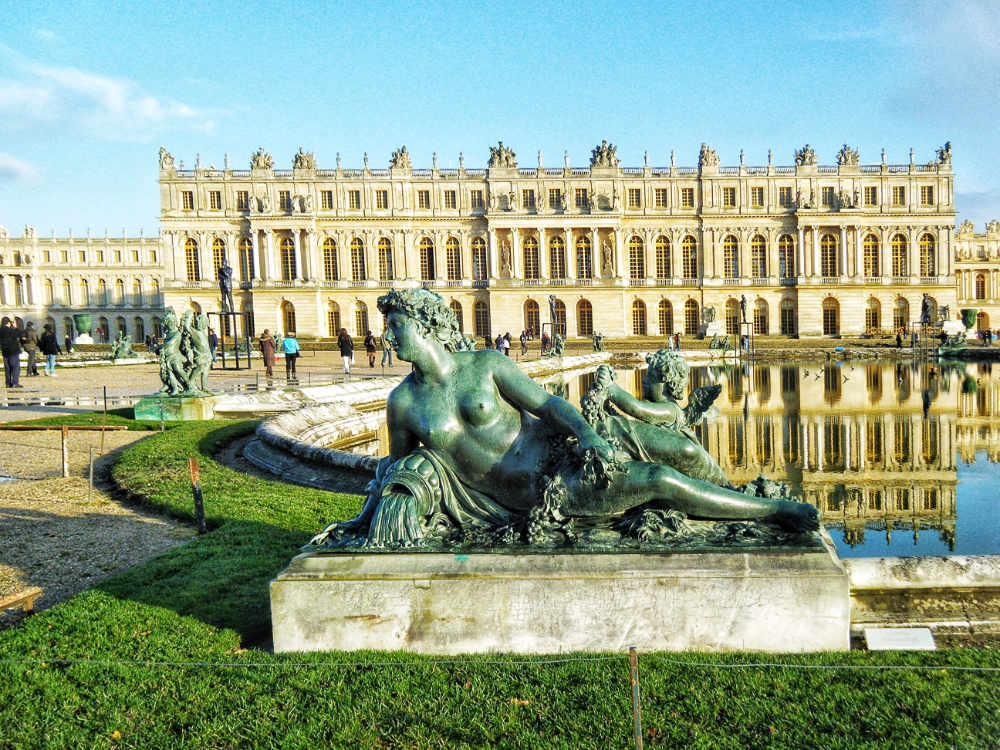
Many other key moments in history took place here as well, such as the Treaty of Versailles (WW1), subsequent German retaliation (WW2), amongst many others, so wander around and breathe in the history of France.
You can read more about visiting the Château de Versailles here. It does get quite crowded, especially in the summer so I highly advise booking tickets in advance.
3. Musée du Louvre
This former castle, turned royal palace, turned zoo, turned museum is a must for lovers of art and history. It is said the Louvre Museum’s collection is so big only 5-10% of its artwork is actually on display.
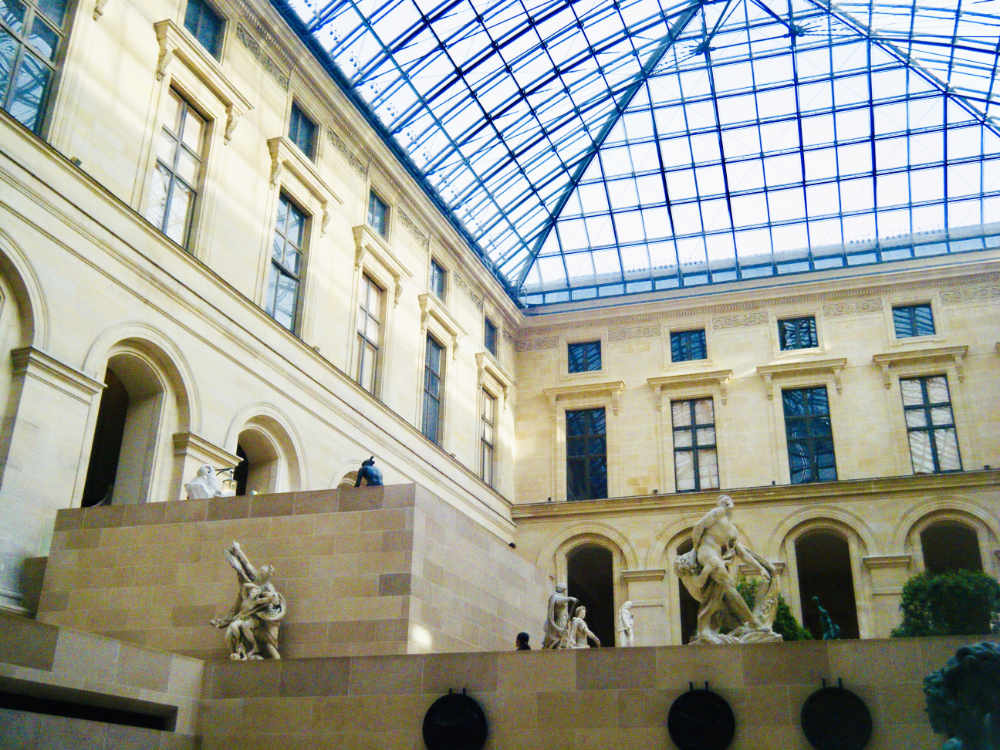
In fact, there is so much art at the Louvre, so you have to pick and choose. For those keen to get clear shot of the Mona Lisa, relax afterward in the peaceful inner courtyard that is filled with ancient Greek statues. You can read more about visiting the Louvre here.
Note: During the busy summer season, tickets often are only sold online for timed entrances. Book in advance to avoid disappointment.
4. Mont Saint Michel
One of the most beautiful and unique sights in the world, Mont Saint Michel is a sight to behold. Legend has it that the archangel Michael appeared to St. Aubert of Avranches in 708 and instructed him to build a church on a large rock.
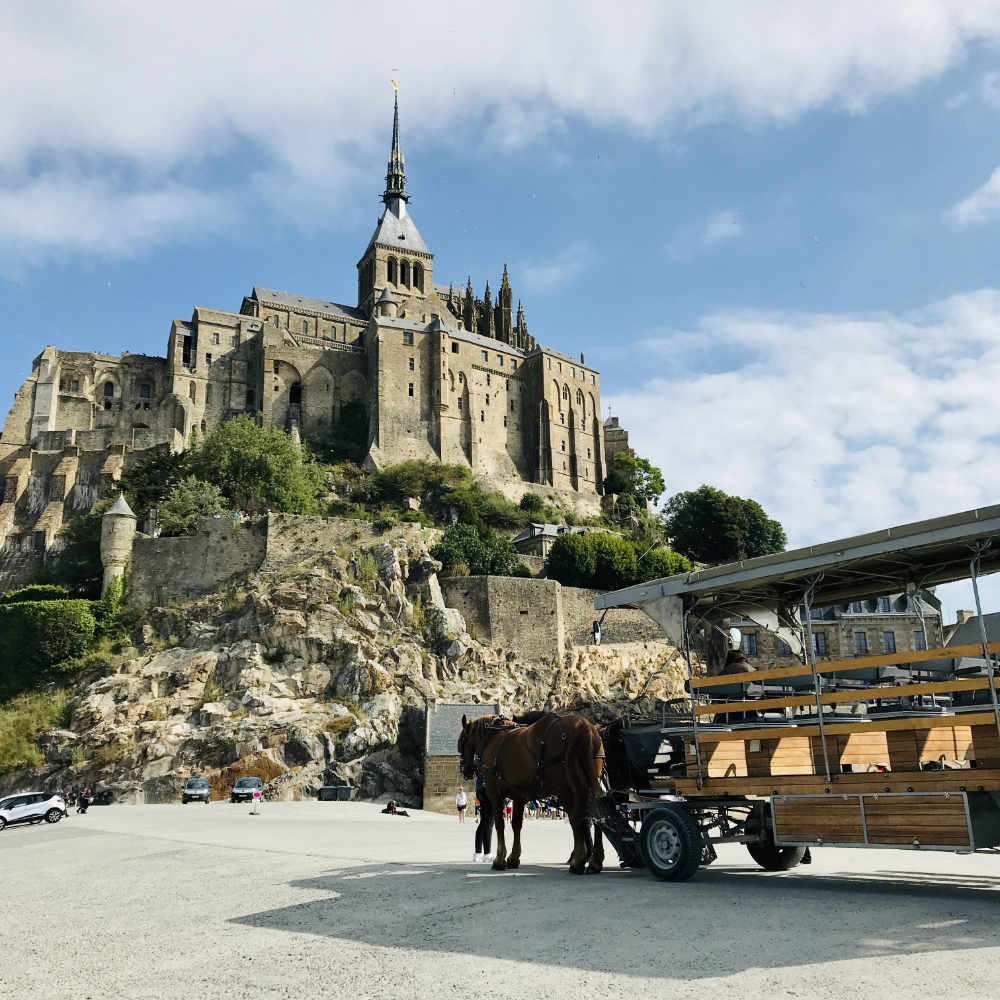
Surrounded by marshland, the waters turns the UNESCO World heritage site into an island when the tide comes in.
It takes about 4 hours to get there from Paris, and to get there from Paris you can take the train from Paris’ Gare Montparnasse to the city Rennes (2 hours), from where SNCF buses travel to Mont St. Michel (1.5hrs).
It is a bit of an adventure though, so this one day trip that I would strongly recommend going with a tour company. You can read more about visiting Mont Saint Michel here.
5. Châteaux de la Loire
It is lucky that the Loire Valley is about 2.5 hours away from Paris (by car), because that meant many of its luxurious renaissance châteaux were saved from the destruction of the French Revolution.
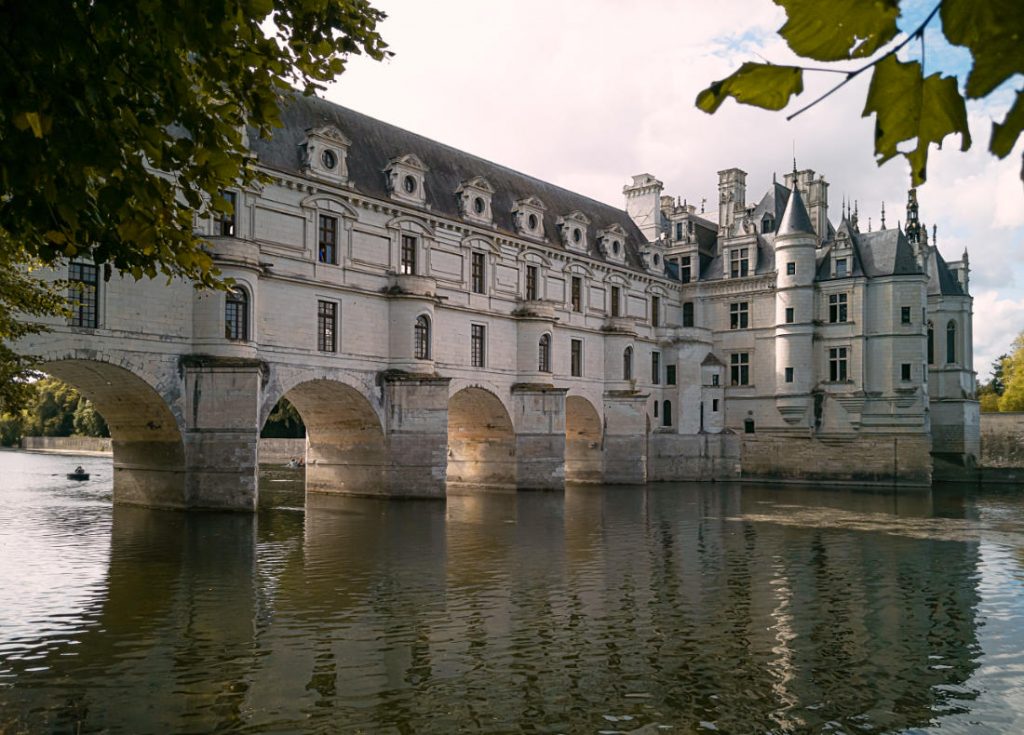
Chateau de Chenonceau and Chambord are two of its most famous. The beautiful city of Amboise has its own Royal Château that you shouldn’t miss.
In addition, the Loire Valley is a wine-producing region, so there are many popular white wines that are grown in the region, which you can read about here. The area is the second-largest concentration of sparkling-wine producing vines in France after the Champagne region.
And since they don’t build train stations next to castles, I would highly recommend taking a tour from Paris. There are several tours that combine wine-tasting and château-hopping as a day trip, or longer if you choose. You can see Loire Valley tour options here.
6. Cité de Carcassonne
Moving to the south of France, one of the most popular tourist attractions in France has to be the in town of Carcassonne.
La Cité de Carcassonne and its Château Comtal, with its enormous walls, look and feel like they belong in another time. And indeed they do, dating back to the Middle ages, when wars were waged on horseback and moats were enough to keep invaders out.
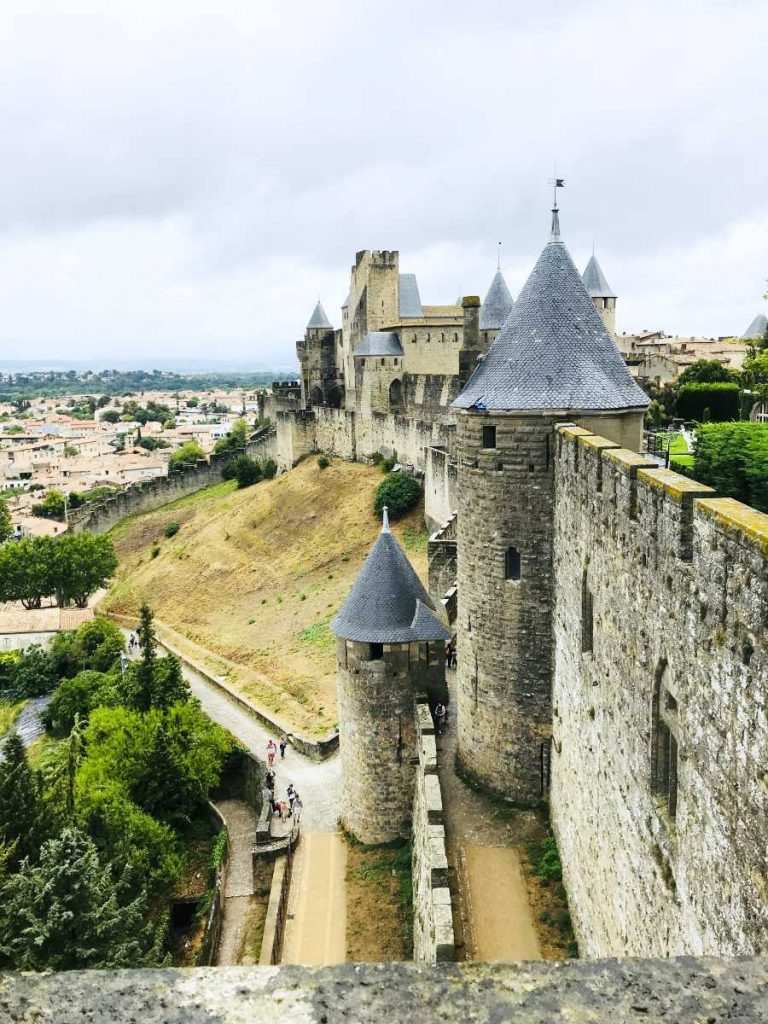
A UNESCO world-heritage site, the Cité de Carcassone is one of the largest of its kind with two outer walls and 53 towers.
The impressive citadel towers on a hilltop, surrounded by wide, stone ramparts that you can walk along and explore. There is quite a lot of see, so to make the most of your day, I suggest taking a guided tour when you arrive at Carcassonne. You can read more about visiting Carcassonne here.
7. Pont du Gard
About 72 miles (117 km) away from Aix-en-Provence in the region of Provence, is an ancient Roman aqueduct known as Pont du Gard.
Built over a period of 5 years in the 1st century, the aqueduct was built to carry water to over 50 km (31 miles) to what was then the Roman colony of Nimes.
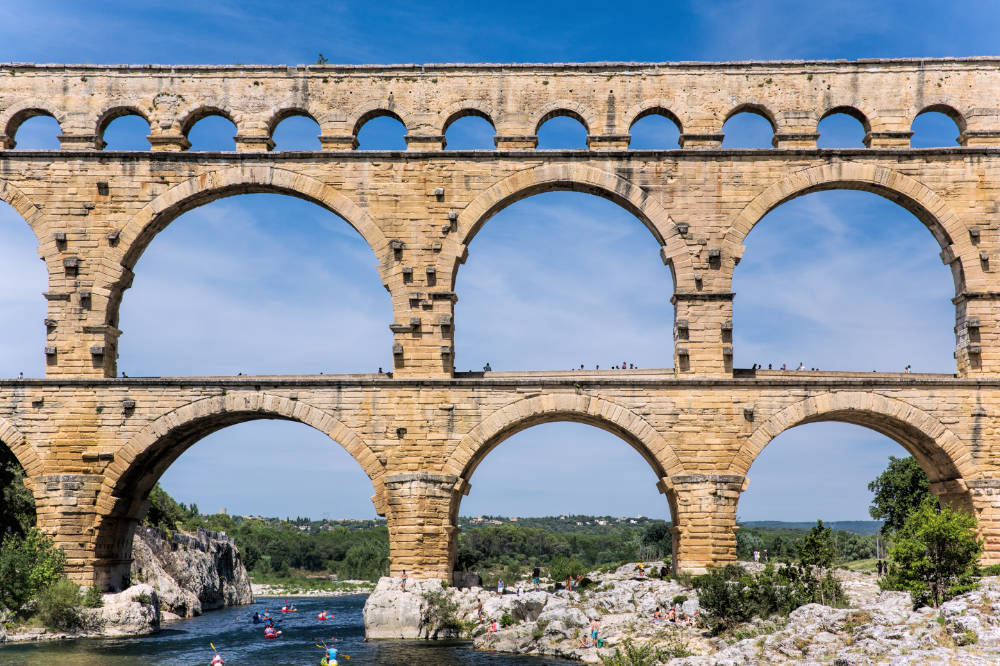
With 3 tiers of arches, it crosses the river Gardon and is the highest of all Roman aqueduct bridges, as well as being one of the best-preserved.
After the Roman empire collapsed, the Pont du Gard remained in use as it also served as a toll bridge for people looking to cross the river. The bridge remained mostly intact, with the Ducs of nearby Uzès being responsible for maintaining the bridge.
Rather than delivering water, the bridge instead became a tourist attraction, with everyone from French Kings to apprentice masons making their way to the bridge to admire its architecture.
In the early 2000s, traffic around the area was rerouted to preserve this UNESCO world heritage site and from pollution and maintain the tranquil nature of the area. Today, it is one of the most popular destinations in France after the Palace of Versailles and Mont Saint Michel.
You will need a rental car to visit, or alternatively you can book a tour from Aix-en-Provence. You can read more about Pont du Gard here.
8. Cliffs of Etretat
The beach town of Étretat in Normandy is one of those places that is very famous in France, but quite unknown to foreigners and tourists.
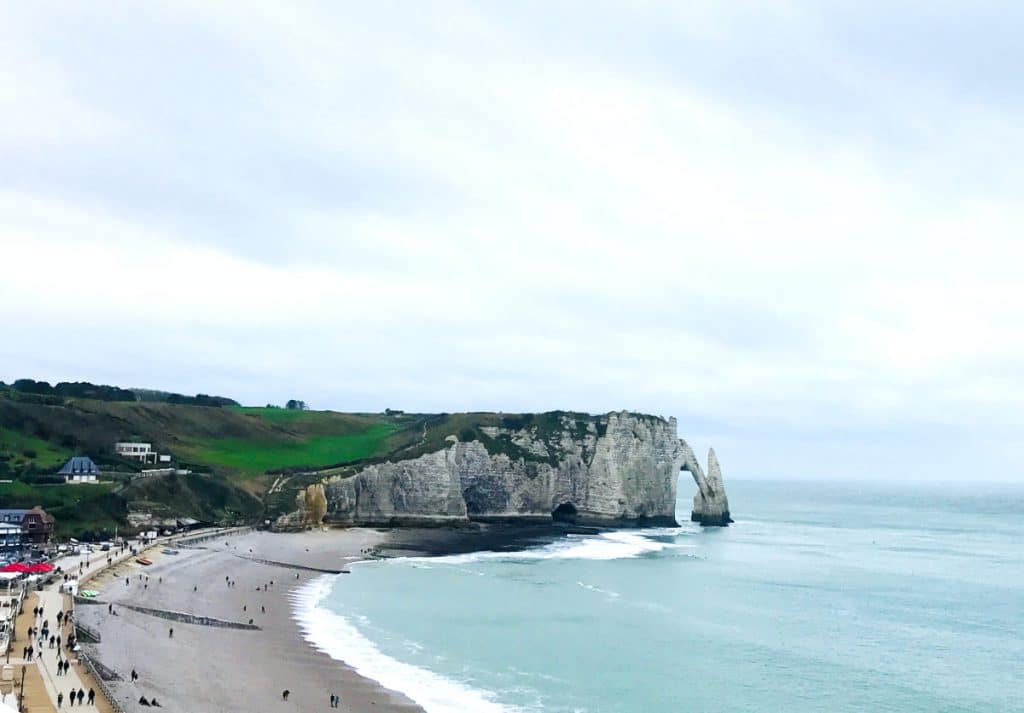
A small town on the north coast of France, the area is known for the striking rock formations known as falaises in French, that carved out of its white cliffs.
It also has beautiful beaches and a long boardwalk all along its coast line. In summer or winter, this coastal town attracts tons of visitors.
With award-winning gardens, beautiful seashore, and a charming old town, there is plenty to see and do in Etretat. You can read more about visiting Etretat here, and find out about tour options from Paris.
9. Cave paintings of Grotte Chauvet
One of the greatest cultural treasures in the world is located in the heart of department of Ardèche, about 124 miles (200 km) away from Lyon.
Known as Grotte Chauvet (Cave Chauvet), it is a cave network which has some of the earliest known Paleolithic human cave paintings. Dating back about 28,000 – 32,000 years old these are among the oldest in the world.
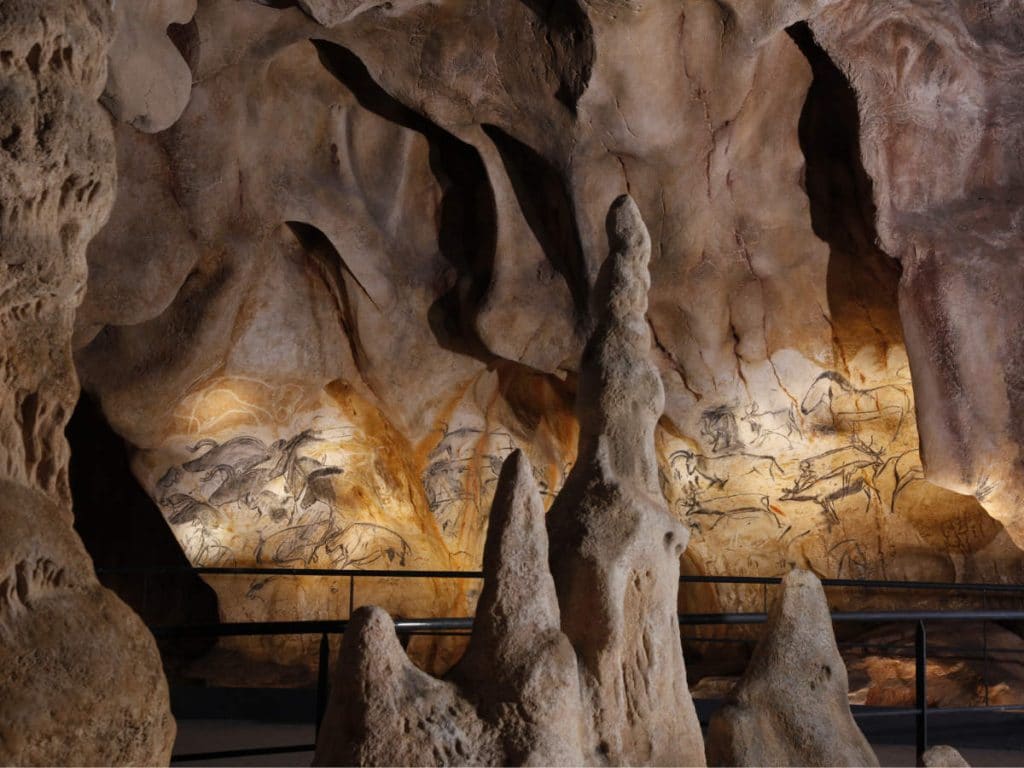
There are several panels with some of the earliest known figurative drawings, making it one of the most important prehistoric art sites in the world. These spectacular images were created by prehistoric humans, or Homo sapiens, as they roamed the European continent.
The actual cave is too fragile to allow visitors, and so an exact replica was built called Grotte Chauvet 2. Built to educate visitors about the Paleolithic era, there is an entire complex of exhibitions to visit about the lives of these prehistoric humans.
Other prehistoric cave complexes called Lascaux and Grotte Cosquer are also on the UNESCO world heritage list, but similarly it is the replicas that are open to visitors. You can read more about visiting Grotte Chauvet 2 here.
10. Mont Blanc and the Alps
The Alps are one of Europe’s most iconic mountain ranges, and certainly one of the most diverse. From the breathtaking views of Mont Blanc and the Matterhorn to the exquisite Lake Annecy at its foothills, the mighty Alps are a sight to behold.
The highest peak in the Alps is Mont Blanc which is about 15,782 feet (4810 metres) tall. Mont Blanc is the name in French while the Italians call it Monte Blanco, both meaning White Mountain.
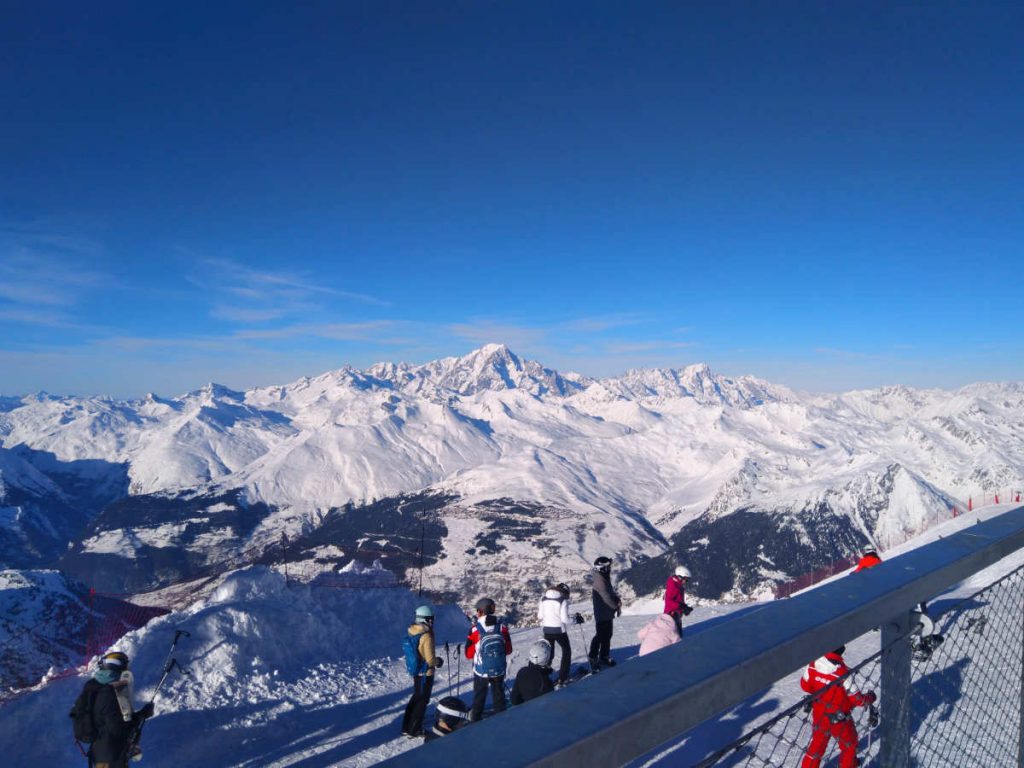
From December to April, the Alps becomes a winter sports haven. Activities like skiing, snowboarding, snowshoeing and tobogganing are extremely popular.
The 3 Vallées and Paradiski have proclaimed themselves the largest ski domaines in the world, with some of the top resorts in France. In summer, activities such as hiking, mountain biking, sightseeing, mountaineering and paragliding are also quite popular.
With local dishes like fondue and raclette originating in this area, it has a culture all its own. (Remember to try the génépi digestif if you are in the area!) You can read more about the Alps mountains here.
11. Rocamadour
The tiny village of Rocamadour in Occitanie has attracted visitors for centuries, among them pilgrims, kings, and nobility.
It is known for its position, perched 150m high on a hillside overlooking the Alzou canyon. It has been a place of worship since the Middle ages for those to come to pray at the chapel to the Black Virgin after having climbed the 216 steps pilgrims’ staircase.
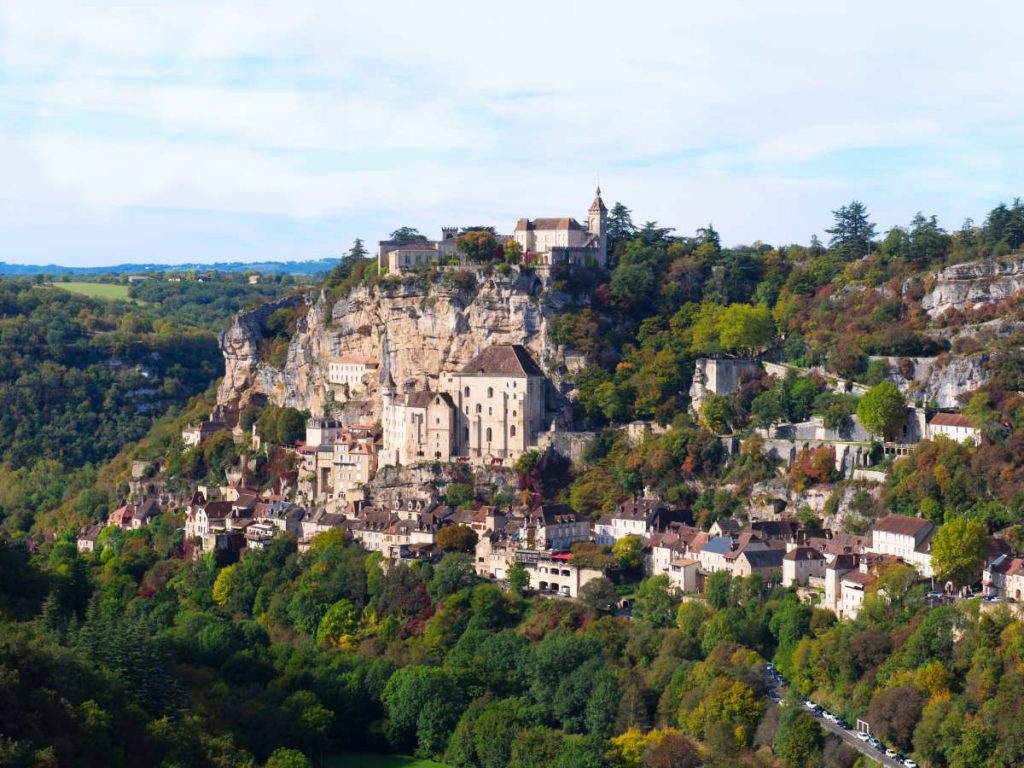
In the last weekend of September, a spectacular sight takes place in Rocamadour, a small clifftop village in south-central France. Around 30 hot air balloons take flight over the valley to pay tribute to the inventors of the Montgolfières, the Montgolfier brothers who were from nearby Ardéche.
Rocamadour is also one of the stops on the pilgrimage route of Saint-Jacques de Compostelle. You can take a tour to Rocamadour from Bordeaux or Sarlat-la-Canéda.
12. Villages of Alsace
The region of Alsace is known for its charming towns and medieval villages with their cobblestoned streets and traditional half-timbered houses.

Located along the eastern border of France and Germany, the region has known many centuries of strife, from the days of Charlemagne to more recently WWII.
After finally becoming a part of France, the Alsace is now thriving as a tourist hub, attracting visitors to its charming little villages and its famous vineyards.
The Alsace Wine Route spans 105 miles (170 km) and along the way are dotted several vineyards and charming little villages like Ribeauvillé, Eguishem, and Riquewihr.
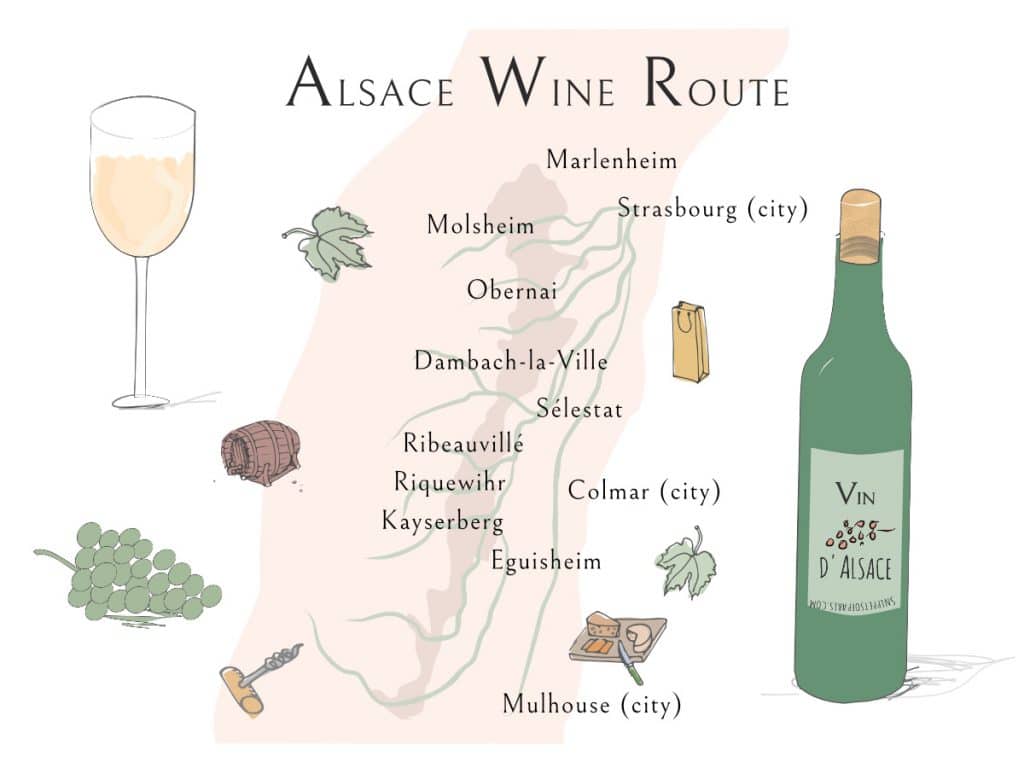
It starts near Strasbourg in the north, past Colmar and ending west of Mulhouse.
Known as the Route des Vins d’Alsace in French, roadtrippers can drive through the region, stopping at vineyards offering tastings, and take home a few souvenirs.
You can find out more information about tours and tour companies travelling in the area here.
13. D-Day Beaches of Normandy
There is a lot to see in historical Normandy, but if you are short on time and want to pay your respects to the soldiers who fought so bravely on D-Day, a day trip from Paris is quite do-able.
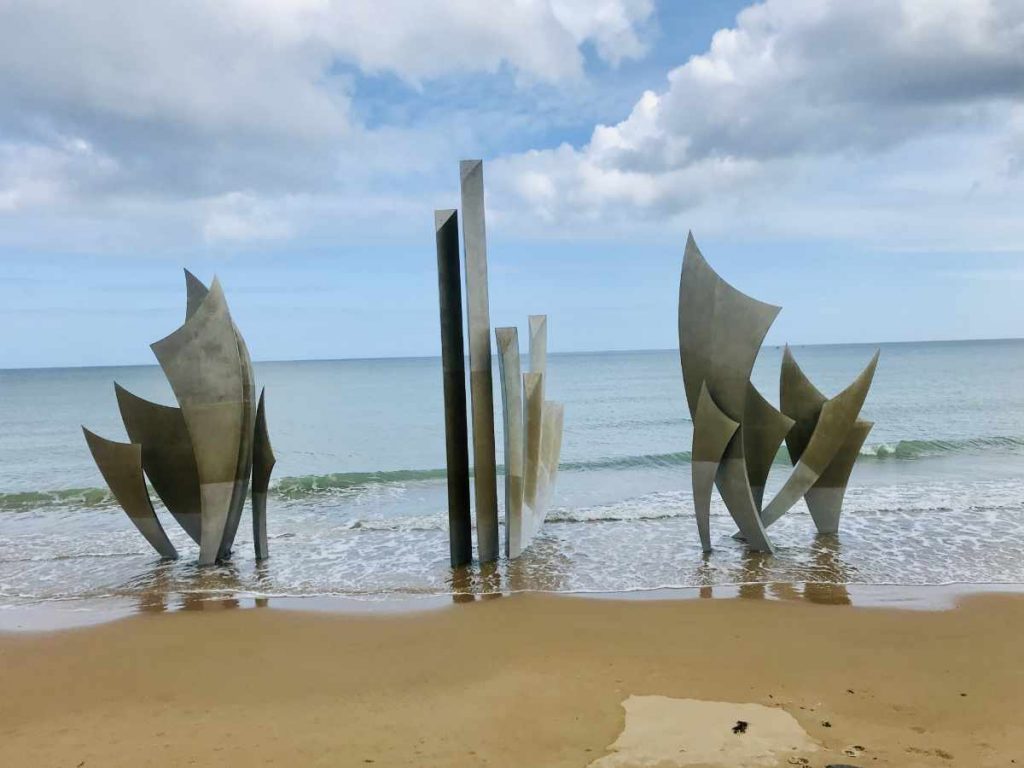
There are many cemeteries, monuments, and museums dedicated to the lives of those soldiers and those living in France at the time. A somber journey, but one that is worth the trip.
You can read more about visiting the D-day beaches here, as well as see tour options to visit the D-day beaches, the Allied cemeteries and more here.
14. Lavender fields of Provence
If you are visiting the south of France, you will not want to miss out on the famed lavender fields in Provence. Those sweet-smelling purple flowers are certainly a sight to behold.
Now, I should note that if you want to see lavender fields, you have to visit Provence in the summer. The best time to visit the lavender fields is between mid-June to mid-July. There is no point visiting in October because there will be no lavender growing, it will already have been harvested.
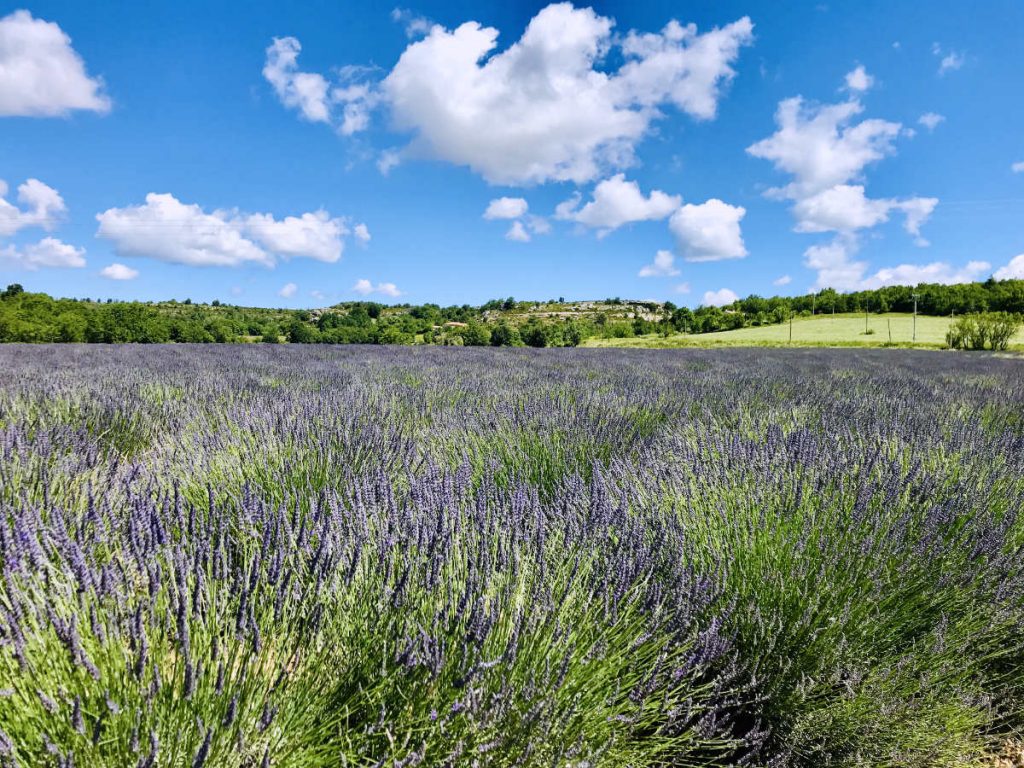
If you do happen to be in Aix-en-Provence during that time, you can visit a nearby lavender farm and learn about its cultivation and uses from a local producer. There are several tours, some which leave in the mornings or in the afternoons that you can see here.
I recommend the morning tours, especially if you are visiting in the summer because it gets very hot under the sun in this part of the world.
15. Reims Cathedral
The historic city of Reims was at one time one of the most important cities in France. Like other cathedrals in France from the Middle ages, it is a gothic-style Roman catholic church.
The cathedral used to be the traditional site of the coronations of French Royalty, and with Reims known known as the “City of Kings”.

Founded by the Gauls at the time of the Roman Empire, it was the place where Clovis I, the first King of the Franks was anointed monarch. Christianity had come to the area, brought by St. Rémi who baptized Clovis here at the end of the 5th century, and after whom the city was named.
Only a handful of the French monarchs were not crowned here, including Napoleon Bonaparte who decided to be crowned at Notre Dame de Paris. His successor Louis XVIII also tried to dispense with the tradition, after the guillotine of his uncle Louis XVI and Marie Antoinette.
The last coronation here was 1825 of Charles X, who was quite unpopular and shortly overthrown after.
The city survived the upheaval of the French Revolution, but it would not be so lucky during World War I. German soldiers invaded the city, and with French and Allied bombs falling, more than 70% of the city was destroyed.
The Reims Cathedral was one of the buildings substantially destroyed and had to be almost entirely rebuilt. A large donation from John D. Rockefeller was able to restore the Cathedral to what we see today.
When you walk through the cathedral, you can’t help but remark upon its extraordinary history. All around the exterior and interior facades, there are giant size statues of French Kings and saints.
The building today is an inspiration for the reconstruction of Notre Dame de Paris which was also significantly damaged after a large fire in 2019. You can read more about visiting Reims here.
16. Beaches and boardwalks of Côte d’Azur (French Riviera)
The French Riviera is one of the most popular holiday destinations in the world. With its glistening waters, beautiful coast, and the attractive towns that line it, it’s easy to see why this place is so popular.
And there is nowhere that epitomizes the Côte d’Azur more than glitzy Saint Tropez. If you are looking for a luxurious beach holiday that will help you relax and enjoy life, Saint Tropez is the place to be.
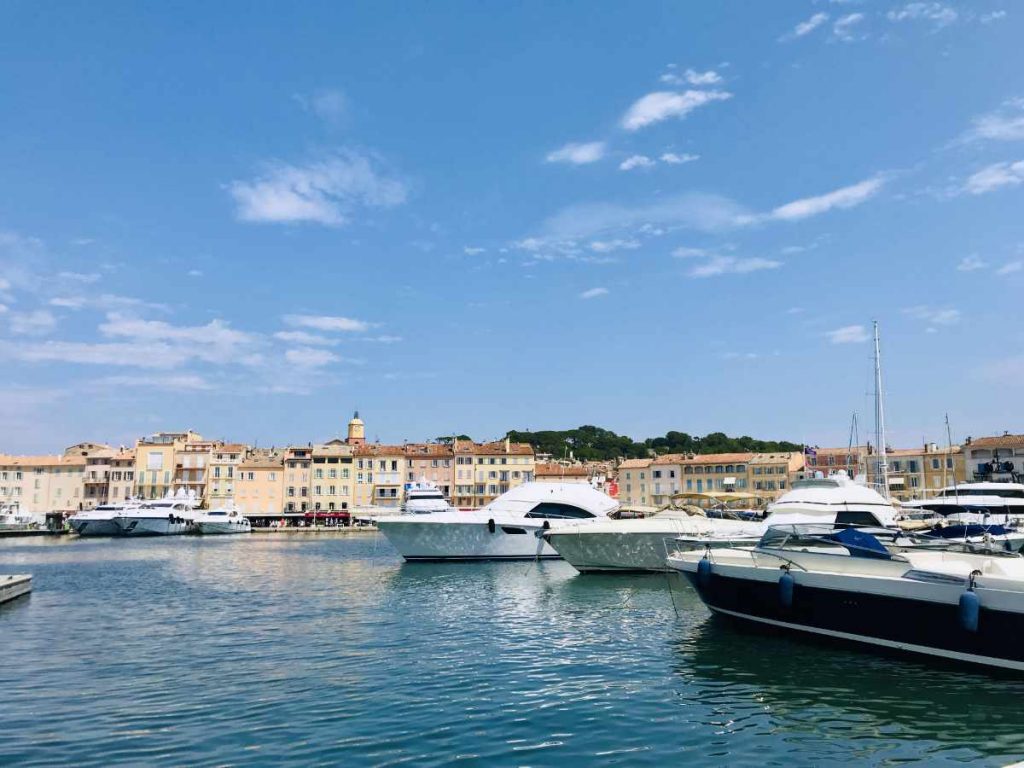
As one of the most famous coastlines in the world, it and has been the playground of the rich and famous for decades, with a rich history of film stars, actors and celebrities, so keep your eyes peeled.
Other nearby cities on the coast that have the requisite sun, beaches, and deep blue seas are Cassis, Bandol, La Ciotat, Saint-Jean-Cap-Ferrat, Cannes, and Villefranche-sur-Mer. And of course, we cannot forget the principality of Monaco.
17. Wine region of Bordeaux
With some of the most popular red wines in the world, Bordeaux is a wine region to be reckoned with. Located on the west coast of France, its easy access to the ocean meant that Bordeaux wines could be easily exported to England, Netherlands, and other European countries as early as the Middle Ages.
When Eleanor of Aquitaine married the English king Henry II, she and her royal court brought with them their culture of wine, as well as easy access to Bordeaux’s vineyards.
When picking a bottle of wine in Bordeaux, it is important to note that a good bottle of wine will be named after the château/domaine it is produced at, not the type of grape. This is unlike some of the other French wine regions, who name the bottle after the grape.

Some of the Bordeaux Grand Crus and the most famous French wines in the world are:
| Bordeaux Wine Name | Appellation | Starting price |
|---|---|---|
| Château Lafite Rothschild | Pauillac | €1000+ |
| Château Margaux | Margaux | €800+ |
| Château Latour | Pauillac | €1000+ |
| Château Haut-Brion | Péssac-Leognan | €1200+ |
| Château Mouton Rothschild | Pauillac | €700+ |
There are five different wine trails around the city of Bordeaux, with the most popular one being the Médoc wine tour. Its unofficial name is the “Route des chateaux”, because these days the châteaux have mostly been converted into luxury wine houses with sprawling vineyards that are open to visitors.
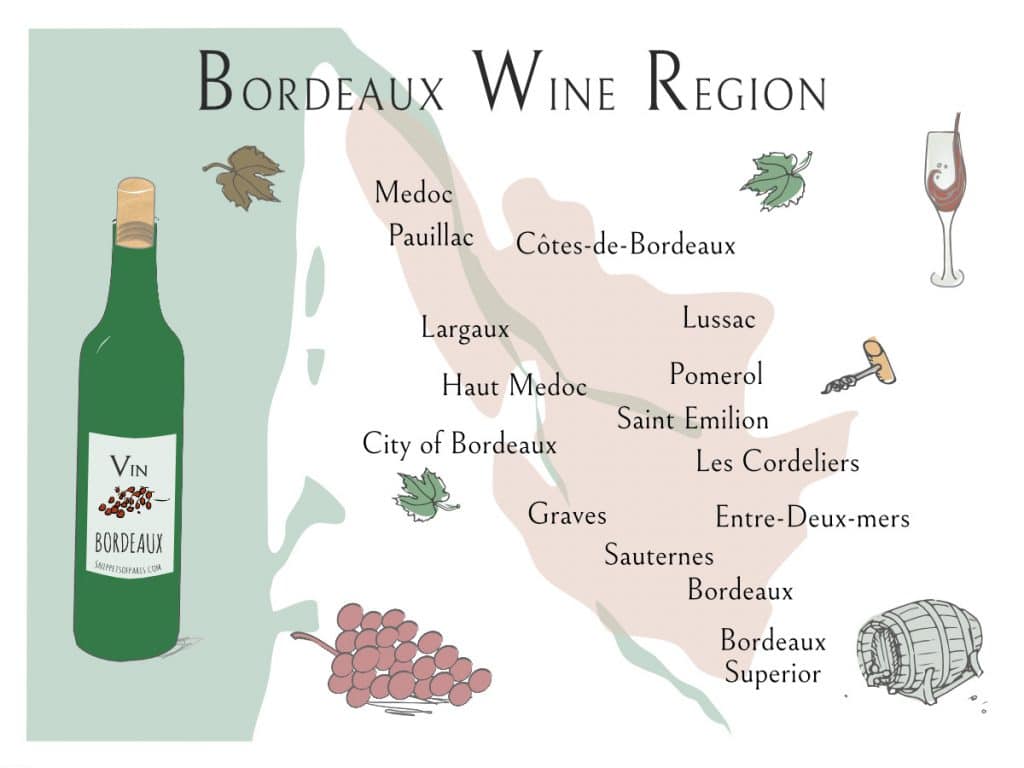
Tourists are welcomed for tastings and to purchase their own souvenirs to take back home. You can get more information about tours and tour companies in the area here. You can read more about Bordeaux wines here.
18. Les Calanques
A set of cliffs to the west of Marseille, Les Calanques are a magnificent natural wonder. With towering rocks and aquamarine clear water, you can decide to hike, swim, or just take it all in.
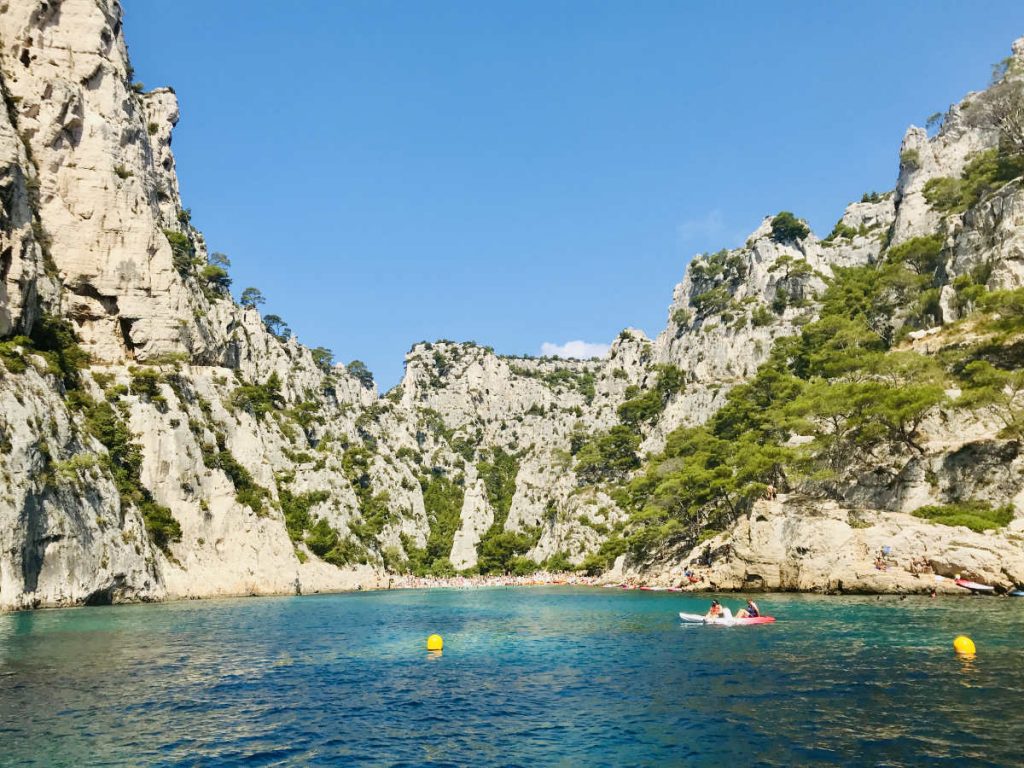
Drive over to the small fishing town of Cassis if you prefer to explore the Calanques by land, or take a boat leaving from the Vieux port of Marseille.
There are several tour boat options to head to the Calanques and you can read more about visiting the Calanques here.
19. Jeanne d’Arc in Rouen
The town of Rouen is about 50 km from Paris, downstream on the same river Seine.
Being part of the Duchy of Normandy, whose lords sometimes swore fealty to the French kings (and sometimes didn’t), it was this strategic location that led the city to grow in size and importance.

But what really put Rouen on the map, when it comes to tourism in France, is a young girl named Jeanne d’Arc (Joan of Arc) who would change the history of France.
She was born in Domrémy over 460km away, but it was in Rouen that she died, burnt at the stake by the dastardly English and their allies on 30 May, 1431.
Walking around Rouen, you will see several streets and landmarks that recount the history of this young woman in Rouen. A discreet statue of her is placed on the side of Église Sainte-Jeanne-d’Arc to mark the spot where she was burned at the stake for heresy. You can read more about visiting Rouen here.
20. Gorges du Verdon
About 62miles (100km) away from Aix-en-Provence lies the Gorges du Verdon. It is gorgeous natural river canyon about 15 miles (25km) long. If you are a nature-lover who enjoys hiking, kayaking, and swimming, you will not want to miss this beautiful protected natural park.

Along with hiking trails and kayak rentals, there is also a man-made Lac de Sainte-Croix at one end of the Verdon Gorge, which has sandy beaches for those who want to spend the day relaxing.
In addition, one of the most beautiful villages in Provence, Moustiers-Sainte-Marie is just a few miles from the Gorges, making it the ideal place to stop and have lunch.
The Gorges is very popular with tourists and there are several tours leaving from Aix-en-Provence to help you make the most of your time in the area. You can read more about visiting the Gorges du Verdon here.
21. Disneyland Paris
If you are traveling with a family (and even if you are not) you cannot miss going to the Château of Mickey. Located just outside Paris, Disneyland Paris actually is much cheaper, compared to other Disneylands in the U.S., Japan, and elsewhere.
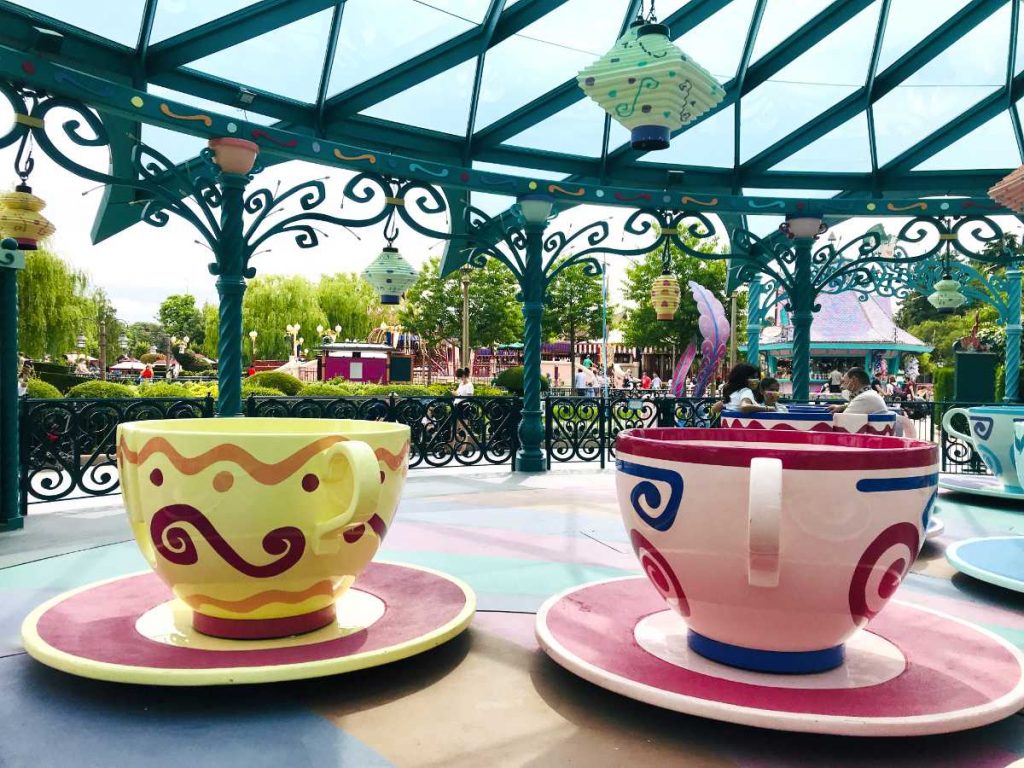
The park is split into two parts: Disneyland Park and Walt Disney Studios. You can buy tickets for both parks, or just one.
There is also the Disney Village which is outside the theme parks and free to visit. You can read more about visiting Disneyland Paris here. Like with most things around Paris, it is best to skip the line and buy tickets and transportation in advance.
22. Lourdes and the Catholic Pilgrimage
In 1858, a 14-year-old poor peasant girl named Bernadette Soubirou thought she had visions of an apparition in a grotto near her family home. Based on her recountings, the townspeople thought it was of the Virgin Mary.
Bernadette would go on to to become Saint Bernadette of Lourdes, and the village she was born in would become one of the the world’s most important sites of Christian pilgrimage.
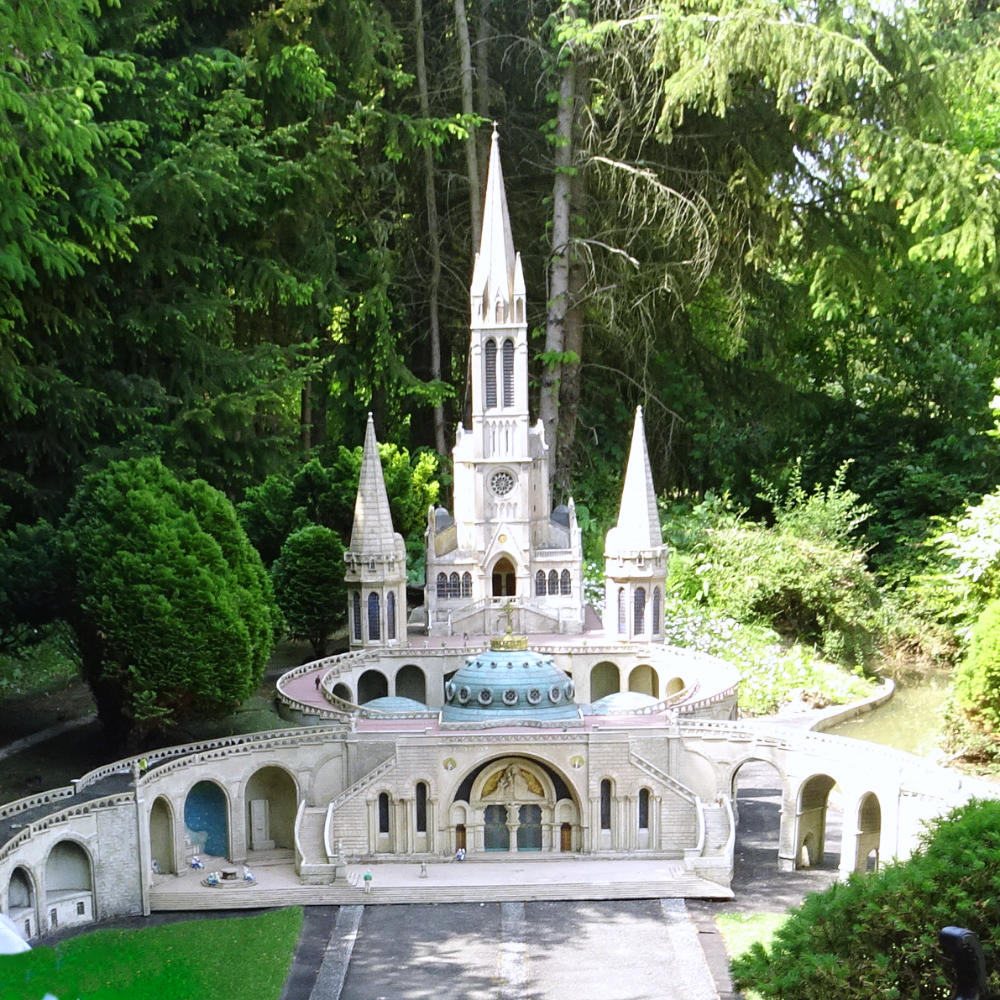
The spring from the grotto is believed to have healing properties, and close to 5 million people are believed to visit the site every year.
In addition to the Sanctuary of Our Lady of Lourdes, the town was best known for the Château fort de Lourdes, a large and imposing castle that sits on a rocky escarpment.
23. Lakeside in Annecy
About 2 hours drive away from Lyon is the Alpine town of Annecy. A delightful combination of medieval France and natural landscapes, it is a town that has attracted visitors for centuries.
Located on Lake Annecy, the city is blessed not only with a charming old town but also with some of the most extraordinary scenery in all of France.

From the old Palais de l’Ile to the Château d’Annecy, this was the home of the Counts of Genova. Known as the Venice of the Alps, the town is famous for its many canals.
And with plenty of lakeside beaches, biking lanes and hiking trails nearby, it is a sports-lovers paradise. You can read more about visiting Annecy here.
24. The Camargue
The Camargue national park near the city of Arles, is known for its unique wetlands and horse-riding culture that attract visitors from far and wide.
Located near the French-Spanish border, the locals have a culture of their own with a tradition and cuisine that is heavily influenced by its next-door neighbour, Spain.
From tapas to bull-fighting festivals, this is an area that is unique in France. The Camargue also has an eponymous horse breed, the famous white Camarguais which are raised in almost wild conditions.
The Camargue is also known for its sea salts that are produced by drawing seawater into marsh basins and allow the water to evaporate, leaving behind the salt. Some salt crystals float on the surface of the water, forming a delicate crust of crystals that is called fleur de sel.
You can read more about taking a tour to nearby Arles and the Camargue here.

So have you planned where you want to visit? If you enjoyed that article, you can read more about visiting France here. A bientôt!
